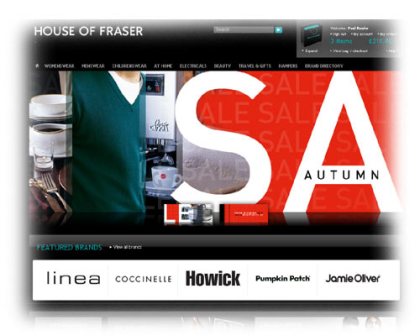A plague of recruitment calls has set Ian Jindal to musing about what we can learn from the reign of the Chief Electricity Officer.
The phone’s been ringing to the point of melting at IR Towers recently and invariably the opening phrases are either “Hi, I’m looking for a new eCommerce Director – could you help?” or “I work for an exective search firm and a client’s looking for an eCommerce Director – can you help?”. Anecdotal evidence indicates that we’re in a boom in ecommerce – the late adopters (sorry, those with “second mover advantage”) are competing with the pureplays and early-starters for a small pool of talent. Actually, for “talent with experience”.
Such is the clamour for talent that in January’s edition we will look in more detail at the state of skills in the industry – how to grow and retain talent, as well as poaching it.
I’ve had cause to consider the skills we require in senior ecommerce folk: major change management, technical literacy, sales-focused customer marketing, trading experience and if possible some understanding of buying product. Oh, and while you’re chatting to this Superhero, ask whether they have board level gravitas, significant expertise in your sector, a desire to work somewhere lost in the bowels of the company bureaucracy and the self-discipline not to use their x-ray vision other than on company business.
This stringent recruitment requirement – out of kilter with market supply – sent me into the bowels of IR Towers, to the musty library, to research when last there was such an intrusion upon the board hegemony of Managing, Sales and Finance directors (at least, since the invention of Marketing in the 1960s, loosening Sales Director’s grasp on the executive washroom key).
The IT revolution put IT Directors on the Board (now they report to the COO – the morphed, ever-resilient FD in many cases); the people-are-our-capital boom of the late 80s put HR Directors on the Board (they too now find a place within the COO’s domain) and the MBA explosion of the last decade had Strategy Directors and Business Development Directors duking it out for the freshest PowerPoint [tm] templates (now everyone on the board is expected to have an MBA). Of course there are strong HR/IT/Strategy Directors on major Boards. However, if you were to prohibit three directors travelling together on a rickety plane you’d select the CEO, COO and CMO, would you not?
Whither then the eCommerce Director, often batted between Marketing, the COO or as a digital adjunct to B&M? Few today would doubt either the importance or transformational responsibility given to the eCommerce Director, yet a permanent position at the Board table is not a given. eCommerce is still seen as “other”, “different” and something to be dumped on someone else’s desk.
Some dusty research offered up by our nonagenarian archivist reminded me of the brief but important tenure of the Chief Electricity Officer. Electricity defined the modern era, yet was an expensive and immature technology. Once standardisation (voltage, plugs etc) was in place the industry entered the mass-marketing phase – but adoption was slow. In 1902, Niagara Falls alone could generate a fifth of all the electricity used in the United States, and by 1907, only 8% of American homes had electricity. eCommerce is just leaving an analogous phase – with broadband now having reached all of the most commercially-attractive homes in the UK, and browser compatibility and stability taken for granted – customer are now looking ‘through’ the technology and assessing the proposition, the price and promotions.
In order to thrive at the Board table our eCommerce Directors will need every one of the formidable skills that the headhunters are seeking. Alongside them, however, so will their Board colleagues. Which FD can today say they ‘don’t do marketing’, or which CMO could blithely claim to be financially illiterate? Of course this no longer happens. In short order, therefore, we’ll see eCommerce Directors with the full range of skills needed to make a contribution to a savvy, supportive and challenging group of Board colleagues.
This temporary bubble should not relieve Boards of the imperative to fully embrace ecommerce any more than the temporary scarcity of talent in eCommerce should lull specialists into an arrogant separatism. The eCommerce Director has no permanent place at the Board table unless and until she manages to “drop the ‘e'” and become, simply and gloriously, the Commerce Director.






